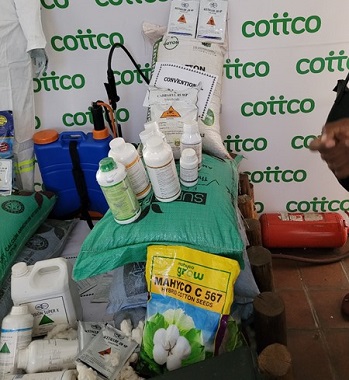Froggy Farm plays ‘big brother’ to smallholder flower growers

Edgar Vhera Agriculture Specialist Writer
THE country’s push to transform the horticulture industry into a US$1 billion entity by 2030 is gaining traction with prominent flower producers like Froggy Farm in Manicaland assimilating 32 smallholder growers into producing protea flowers.
Froggy Farm managing director Mr Garth Fowler revealed this during a recent Horticulture Development Council (HDC) business breakfast meeting in Harare highlighting steps they were taking to incorporate smallholder farmers in Chimanimani.
Mr Fowler said they were using a hub-and-spoke model in which they served as the ‘hub’ while the farmers were the ‘spokes’ just like on a bicycle wheel.
“We provide the farmers with technical assistance as well as planting material from our nursery. The material is provided upfront at a reasonable cost and offset against future grower payments. Farmers are contractually bound to provide Froggy Farm (the hub) with cut protea flowers, and are paid per stem according to the flowers’ grades.
“Froggy Farm sells the flowers either locally or internationally through their partner Zimbabwe Flower Exports (Zimflex). The hub retains 20 percent of the farmgate price and 80 percent is paid directly to growers for sustainability of the model,” said Mr Fowler.
Manyoli village, from where the smallholder farmers come is located 15 kilometres from the hub and is accessible by road. It is situated on sandy loam soils ideal for proteas at the ridge of the Manyoli Mountain.
The area has a combined total of 41ha of cleared land with a further 36ha uncleared. Proteas are the ideal crops for the area as they are drought-tolerant. They grow best on well-drained sandy soils and require no major capital expenditure in infrastructure. As an indigenous variety, they are relatively pest and disease free. Proteas do not require cold storage for the first 24 hours after harvest. Both wild and domestic animals do not eat proteas, which naturally use low fertility land and grow slowly with low management skills.
“Farmers are trained in composting, water conservation, business development systems, value addition and post-harvest handling. Froggy Farm in conjunction with Zimflex will run four quarterly ‘Zimflex – Protea field days’ with local farmers on site.
“Froggy Farm currently has over 20 varieties of protea with a 300 square-metre propagation greenhouse tunnel. Our primary aim is to use the space available on Froggy Farm to build financially viable and environmentally suitable root stocks for further propagation to service the out-grower programme. Froggy Farm has over 15 000 cuttings in the propagation house for distribution to growers,” added Mr Fowler.
The HDC in its inaugural investment conference last year cited the ‘hub and spoke’ model as the pull-factor for incorporating smallholder farmers in the main export business.
HDC membership and stakeholder liaison officer Ms Chiyedza Heri said smallholder farmers have a key role to play in the global agricultural value chain, especially in sub-Saharan Africa, where they provide up to 80 percent of the food supply.
“However, with limited access to markets, inputs and finance, they are frequently caught in a cycle of producing low-yielding and low-quality crops. This makes aggregator and hub schemes exciting, as they generally involve linking smallholder farmers to national and international buyers. Additionally, they facilitate farmers’ access to financial and technical support to improve yields and the quality of crops to enhance economic security,” said Ms Heri.
She said a well-coordinated hub and spoke model can be an effective way to coordinate and promote production and marketing in agriculture. The HDC is seized with mapping existing inclusive models, identifying existing export growers and potential smallholder syndicates and identifying hub and spoke models suitable for each sub-sector.
All this is intended at promoting inclusiveness in the horticulture sector, expanding outreach to smallholders, and increasing productivity, profitability, and sustainability of horticultural farming in Zimbabwe, continued Ms Heri.
During the late 1990s Zimbabwe was the second largest exporter of proteas worldwide and was producing them on an estimated 450ha of land in various varieties. The hectarage has since dwindled to less than 50.
Because of the latitude, Zimbabwean flowers generally come onto the market two to four weeks ahead of South Africa’s and usually fetch a higher price. Flowers used to contribute 60 percent of horticulture exports by value and 70 percent of the total flower exports were mainly roses. At its peak in 2002, flowers earned the country US$85 million.










Comments